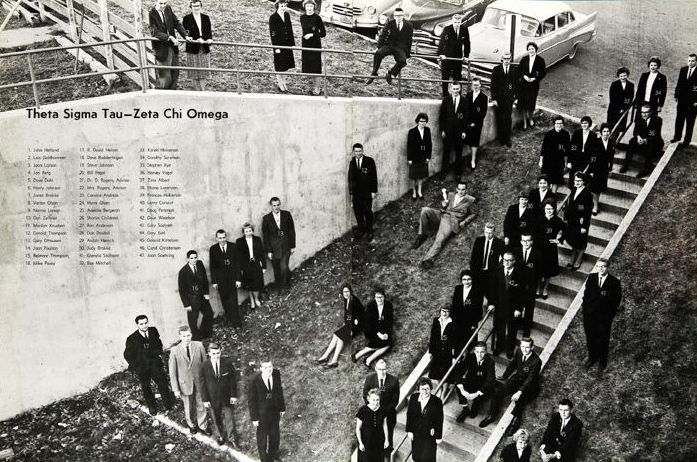ASA expects Lyft program cost increases

ASA predicts it will spend between $70,000 and $80,000 on the organization’s Lyft program by the end of May, which is an increase of $20,000 to $30,000 compared to last year’s expenditure.
According to ASA President Sara Alhasnawi, during the previous ASA administration from June 2021 to May 2022, the Lyft program cost approximately $50,000.
The Lyft program has cost the current administration $52,000 since June of 2022. The predicted total for the end of this academic year could range from a 40% to 60% increase from last year.
Alhasnawi attributed the increased usage and subsequent cost of the Lyft program to her administration’s expanded advertising of the program and to the larger number of international students on campus this year. She said she expects the increasing cost to continue over the next two months for the same reasons.
“We were very intentional with trying to advertise during Welcome Week and connecting with a lot of student organizations about getting this resource out there, so if students want to opt in, they can,” Alhasnawi said.
According to Alhasnawi, about 25% of the total student body is enrolled in either Ride Smart, the program geared towards international students and those without cars, or Ride Safe, the program geared towards students who go out on weekends. Junior Vedant Thakkar, a member of the ASA finance committee who leads the transportation task force, gave a smaller number.
“As of February 2023, we had 84 students enrolled in Ride Safe and 253 students enrolled in Ride Smart,” Thakkar said.
Ride Smart provides students with six ride vouchers per month, each worth $10, as well as access to Lyft at all hours every day. Ride Safe provides students with four vouchers, each worth $10, and it only provides transportation on Fridays and Saturdays from 8:00 p.m. to 3:00 a.m.
The Lyft program currently takes up 15% of ASA’s total budget. Funding for the program comes out of the ASA general fund, which is made up of student activity fees.
According to ASA treasurer Cal Irvine, ASA budgeted $8,000 per month for the duration of this administration for the Lyft program, and the increased costs have not yet exceeded that allotment. However, there has still been some concern among senators about the increasing costs eventually affecting other programs.
Irvine said the anticipated cost of the Lyft program has made the senate hesitant to approve other funding throughout the current academic year so far.
“There’s definitely been other opportunities that would have been interesting to pursue, or at least look into, but those conversations were either put on the back burner or we just didn’t pursue them because of how much Lyft has come to be over the past two years,” Irvine said.
While Alhasnawi said she was not concerned about the Lyft program affecting the funding for other programs right now, it could be an issue for future administrations, especially if more of the student body continues to enroll in the program.
“It’s not something that’s going to break the bank for us in the imminent future, but I could see five years down the line, maybe that ASA administration would have to roll back on rides or something to make sure that they’re not overspending,” Alhasnawi said.
The ASA transportation task force — composed of Thakkar and Irvine — has been communicating with administration about relinquishing some of the costs of the Lyft program to administration funds rather than the ASA general fund. ASA is still drafting proposals on a transfer and the timeline of when a transfer may take place is unclear.
“In the conversations I’ve had with Mark [Blackburn, dean of students], we would still want the ASA technical director to manage the program and the relationship with our Lyft partners, but rather than having [the expense] be allocated through an ASA account, it would be through one of his accounts,” Irvine said.
Students enrolled in both programs seem to have had positive experiences so far. In an ASA assessment of student opinion, the majority of people who responded reported they were satisfied.
According to Mihiret Yemane, a freshman international student enrolled in the Ride Smart program, the program is useful for almost all international students.
“When we want to go out, we usually use Lyft, so this program has really helped us a lot,” Yemane said. “I’m really grateful for the Lyft program.”
Junior Shirley Wang, another international student in the Ride Smart program, said when she lived on campus, she frequently used the program for things like medical visits and grocery shopping. Even though she now lives off campus and has partial access to a car, she still relies on the Ride Smart program at least weekly.
“I live off campus, and my mom is here, and I have a car, but my mom uses the car to work, so sometimes I still need to get to places,” Wang said. “If I have a doctor’s appointment, or when I volunteer at a place every Monday, I will walk over there and then take the ride back. It just helps me a lot.”
According to Yemane, many international students want more passes for more rides, but she desired no other changes.
There are currently no planned revisions to the Lyft program, but Thakkar said he could foresee future changes if enrollment continues to rise.
“This program is helping out a lot of students, so I don’t think it would be a good thing if we started cutting back on it,” Thakkar said. “However, at this point in time, if [we’re] not able to find anything in the short term that would help us save money, then we would have to take those drastic measures, but that’s not on the table yet.”



